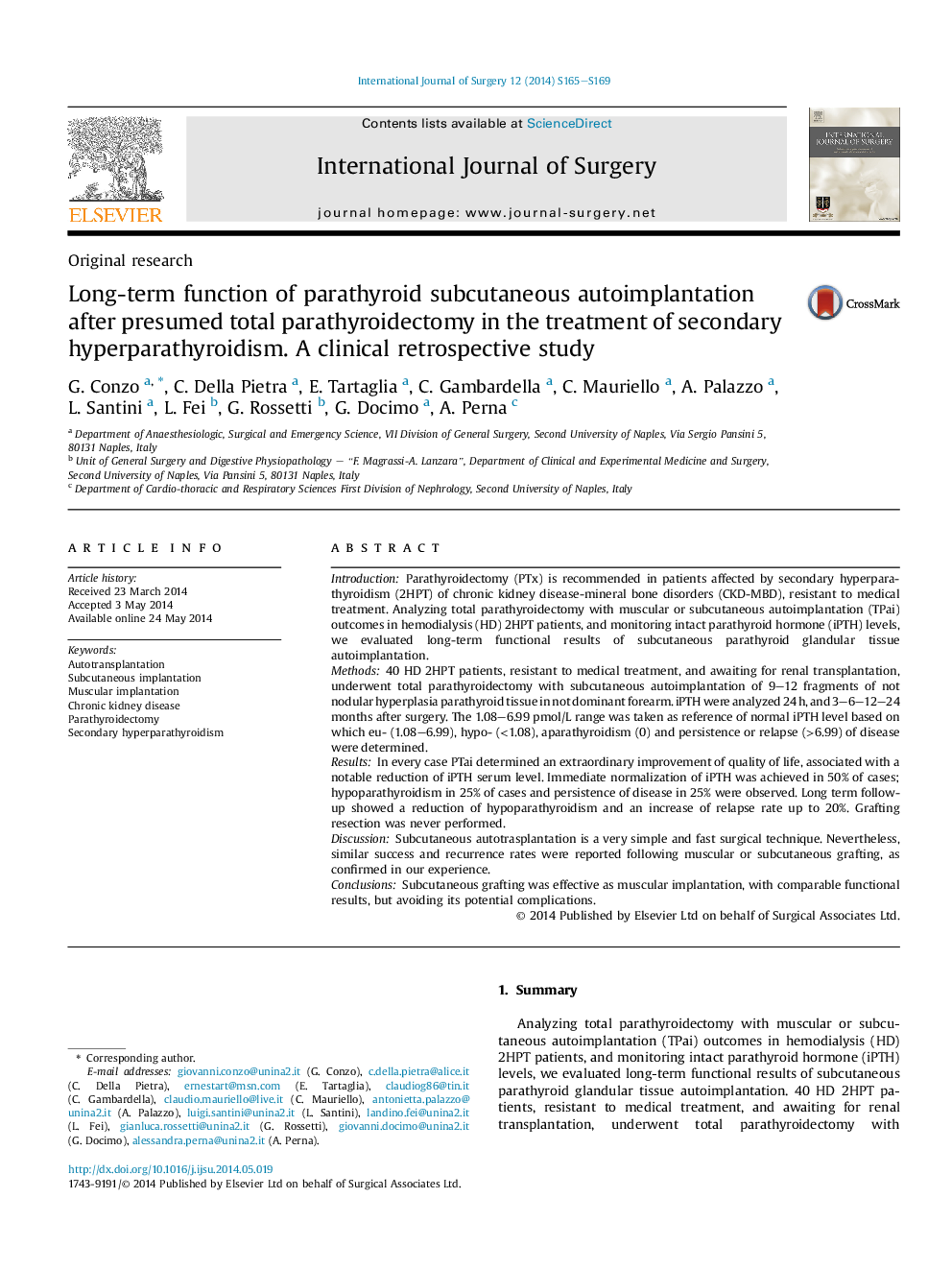| Article ID | Journal | Published Year | Pages | File Type |
|---|---|---|---|---|
| 4286666 | International Journal of Surgery | 2014 | 5 Pages |
IntroductionParathyroidectomy (PTx) is recommended in patients affected by secondary hyperparathyroidism (2HPT) of chronic kidney disease-mineral bone disorders (CKD-MBD), resistant to medical treatment. Analyzing total parathyroidectomy with muscular or subcutaneous autoimplantation (TPai) outcomes in hemodialysis (HD) 2HPT patients, and monitoring intact parathyroid hormone (iPTH) levels, we evaluated long-term functional results of subcutaneous parathyroid glandular tissue autoimplantation.Methods40 HD 2HPT patients, resistant to medical treatment, and awaiting for renal transplantation, underwent total parathyroidectomy with subcutaneous autoimplantation of 9–12 fragments of not nodular hyperplasia parathyroid tissue in not dominant forearm. iPTH were analyzed 24 h, and 3–6–12–24 months after surgery. The 1.08–6.99 pmol/L range was taken as reference of normal iPTH level based on which eu- (1.08–6.99), hypo- (<1.08), aparathyroidism (0) and persistence or relapse (>6.99) of disease were determined.ResultsIn every case PTai determined an extraordinary improvement of quality of life, associated with a notable reduction of iPTH serum level. Immediate normalization of iPTH was achieved in 50% of cases; hypoparathyroidism in 25% of cases and persistence of disease in 25% were observed. Long term follow-up showed a reduction of hypoparathyroidism and an increase of relapse rate up to 20%. Grafting resection was never performed.DiscussionSubcutaneous autotrasplantation is a very simple and fast surgical technique. Nevertheless, similar success and recurrence rates were reported following muscular or subcutaneous grafting, as confirmed in our experience.ConclusionsSubcutaneous grafting was effective as muscular implantation, with comparable functional results, but avoiding its potential complications.
